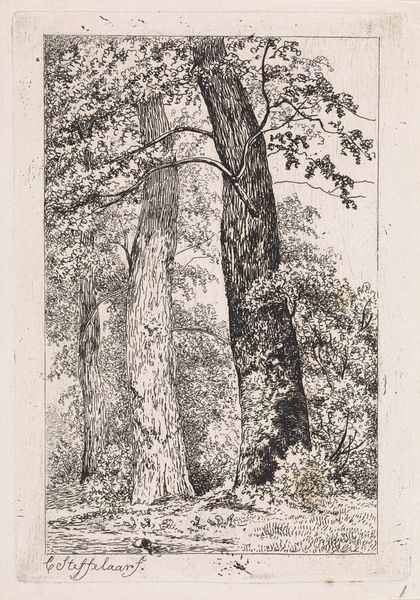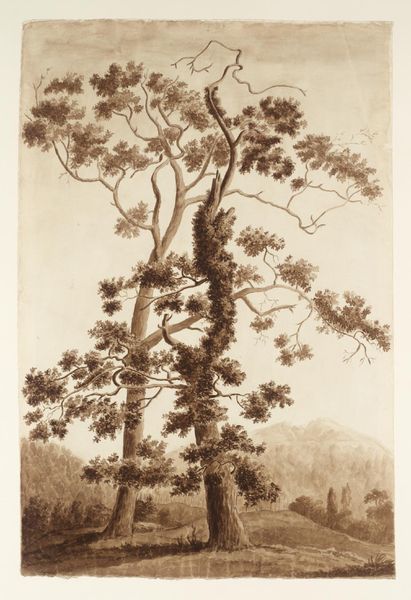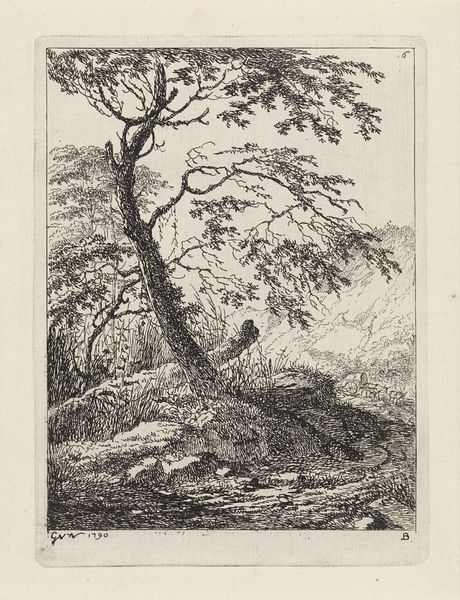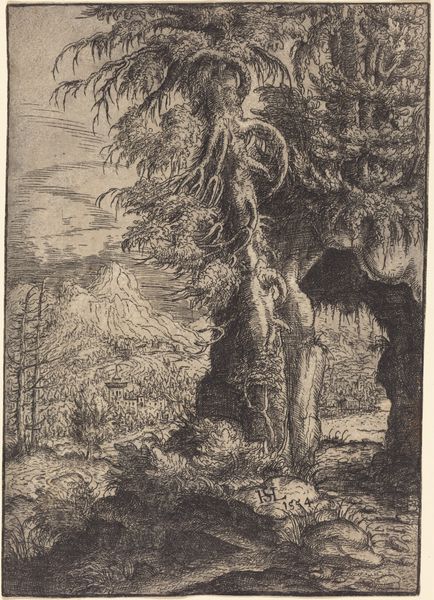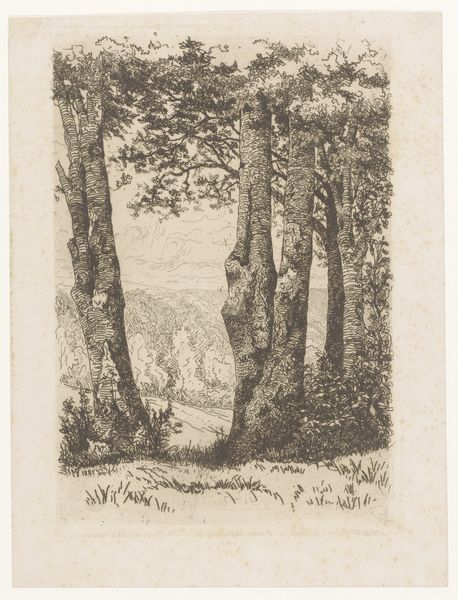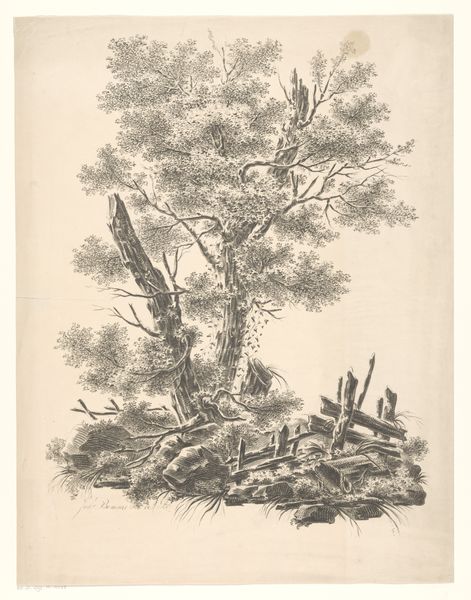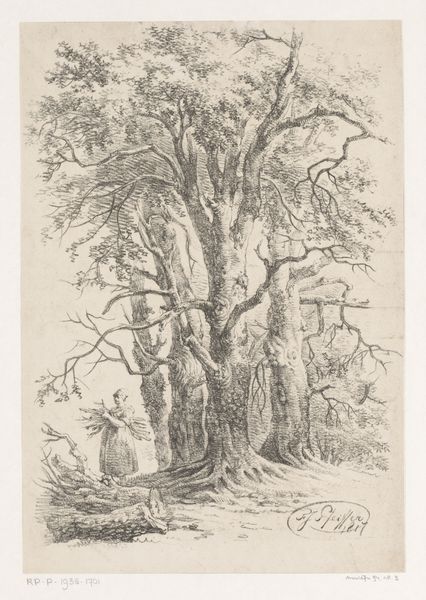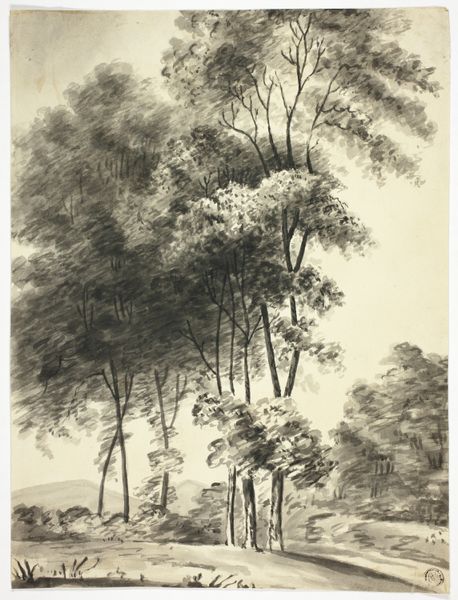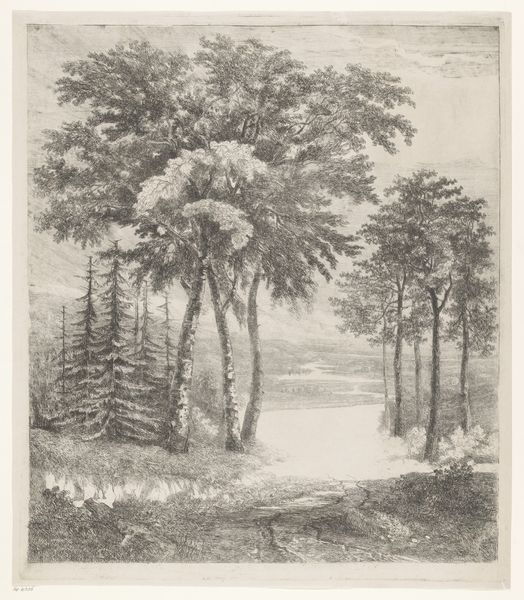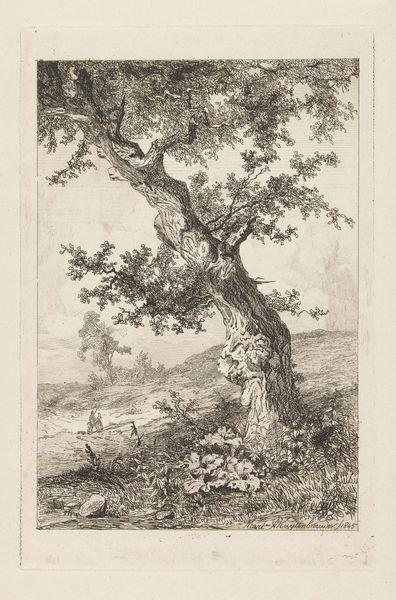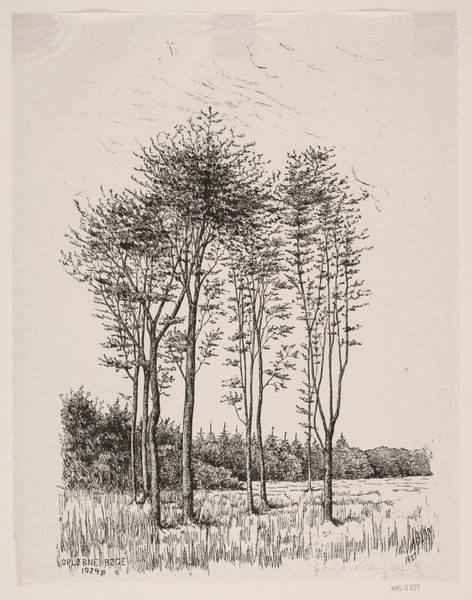
drawing, print, etching, pencil, graphite
#
drawing
#
negative space
# print
#
etching
#
landscape
#
form
#
pencil drawing
#
pencil
#
line
#
graphite
#
northern-renaissance
#
realism
Dimensions: 288 mm (height) x 220 mm (width) (bladmaal)
Editor: Here we have H. Gerner Lund’s "Klippelandskab," created in 1915, using etching and graphite. I find it striking how this lone tree dominates the landscape despite the small scale of the work. How do you interpret this piece? Curator: What I see is a visual statement about resilience and the individual’s relationship to a broader, sometimes harsh, environment. Consider the historical context: 1915, Europe is engulfed in World War I. Lund, in neutral Denmark, perhaps uses the landscape to explore themes of steadfastness in the face of overwhelming forces. Does the stark contrast between the detailed tree and the hazier background resonate with that? Editor: That's fascinating! I hadn’t considered the war's influence. So, you’re saying the tree is more than just a tree, but a symbol? Curator: Precisely! And think about landscape art traditionally serving as a proxy for national identity. Here, it's almost as if Lund is asking: what defines a nation's character in times of crisis? What endures? It's interesting to consider how he employs typically nationalistic imagery towards a more pacifistic end. Editor: So, this seemingly simple landscape is actually a powerful commentary on resilience and national identity during wartime? That’s a lot more complex than I initially thought! Curator: It invites us to question traditional representations of power and strength. By focusing on a single, enduring tree, rather than grand, sweeping vistas, Lund offers a more intimate, perhaps even feminist, perspective on resilience. Editor: I see what you mean. It’s like he's subverting expectations, finding strength in a quiet, solitary figure. Curator: Exactly. And how might our contemporary understanding of environmental fragility further shape our interpretation of this image? The lone tree now also speaks of endurance threatened. Editor: I will never look at a landscape the same way! Curator: That’s the beauty of art. It continually shifts and evolves with us, challenging our assumptions.
Comments
No comments
Be the first to comment and join the conversation on the ultimate creative platform.

